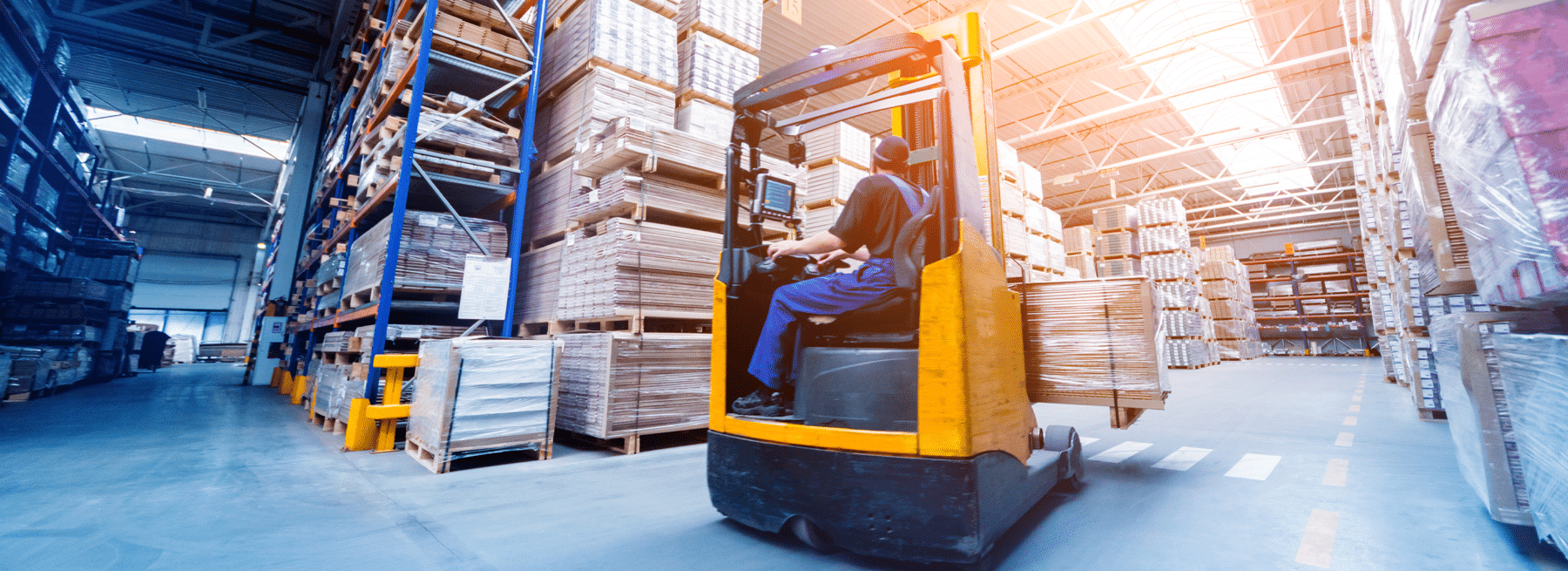Warehouse operations face various barriers including workforce shortage, turnover, and training. Add inflation to this as it drives up the cost of many things, warehouses may be struggling to maintain profits. This is why it’s so critical to do continuous process improvement to enhance operational efficiencies. How can a warehouse operate when it doesn’t have enough workers to help it keep up with customer demand?
Even a large company like Amazon can contend with being understaffed. A story from Vox mentions the ecommerce company’s internal research indicates they may not have enough people to staff its warehouses by 2024. This is a major issue because it affects Amazon’s plans for growth and high-quality service. The warehouse industry must take notice because Amazon’s situation could be a sign of what’s to come for the rest of the industry.
According to the U.S. Chamber of Commerce, manufacturing lost almost 1.4 million jobs during the pandemic. They have not been able to hire the entry-level and skilled workers they need. While some companies have been able to fill the gaps with remote working, that’s not possible for warehouse operations.
The struggling supply chain and inflation have affected every consumer and every industry. However, the good news is there may be signs of the supply chain righting itself. Still, it doesn’t mean it has not had serious repercussions. Accenture research states that 94% of Fortune 1000 companies have run into supply chain disruptions. So, it’s not surprising that 75% of the companies participating in the research indicate the supply chain’s impact on their company has been either negative or strongly negative.
Thanks to high inflation, the cost of things has changed how companies and consumers buy. Warehousing needs to look for creative solutions to manage the fact they’re shorthanded while dealing with an elevated price tag for the things it purchases for business including raw materials.
As if these are not enough, the warehouse industry must keep safety in mind at all times. They must do what they can to cut the risk of injuries. Warehouse facilities and manufacturing have some of the most dangerous jobs. It’s just the nature of the work.
How to Boost Warehouse Operations
Somehow, facilities must find ways to level up warehouse operations. It may feel like you’ve squeezed all the juice out of an orange and there are no drops left to improve operations. Here are the top ways to do that you may not have considered.
1. Digitize More
A lot of warehouse companies still depend on manual picking processes. Digitizing this process will greatly reduce human error and non-value-added work. When you integrate digital transactions into an ERP or WMS, productivity and accuracy will soar.
If you’ve already replaced paper-based picking, then you may still be using other outdated technology like scanners. You can upgrade this technology to use voice picking or visual picking.
Voice picking involves wearing a headset. Warehouse staffers give voice commands to interact with the business systems and pick lists. This frees up their hands for picking tasks to make them safer, more efficient, and more accurate. According to Almasons, voice picking can boost productivity, cut errors, reduce turnover, lower training time, and lower the risk of safety incidents.
Visual picking, on the other hand, uses augmented reality headsets to visually display picking instructions, quantities, and where to stack or put picked items. Augmented reality puts digital visual information into the real space around the worker. Like voice picking, visual picking is hands-free and faster.
There are also automated mobile robots (AMR). These allow workers to focus on value-added tasks and less on repetitive ones. AMRs are faster and help fill in the workforce shortage gap.
2. Train Workers
Various research reports have found companies that go the most days without worker injuries prioritize training and safety. They tend to conduct training or safety briefs every day. Their employees know to run safety checks when they start their workday and follow a process to properly shut down at the end of the day. Some equipment requires preparation prior to use. When workers do this, it increases safety.
Training can be less expensive than the actual price of an injury or fatality. If you level up your technology, then it will shorten the training. Training doesn’t have to be formal or in a classroom. As mentioned before, it can be a daily briefing that goes over safety checks, inspections, and basic safety. It could be demonstrating the right way to prepare and shut down equipment.
It should also cover how to use equipment and personal protective equipment (PPE) properly. Sometimes workers don’t use the correct gear or equipment for the task. This is one area where you don’t want to become complacent. If there’s one thing that bears repeating, it’s safety training and advice. Safety instructions are also so crucial that anyone who speaks a different language needs to hear the message in their own language. So, hire a translator.
Every single training or safety debriefing should remind employees to report safety hazards. Give them a way to submit reports safely and anonymously. They may be afraid it will get them in trouble when it could save the company a lot of money in medical bills and lawsuits. In fact, an EHS Daily Advisor article reports workers only speak up 39% of the time.
3. Enhance Operational Efficiencies
Here’s one thing that you want to do to be like Amazon. Vox reports the ecommerce giant has invested in robots, performance-training tools, and reengineered processes to improve operational efficiencies. They’ve worked to create a lean manufacturing process.
What they did was remove useless tasks and move workers to value-added tasks. This increased productivity. Beware the Vox story indicates Amazon’s efforts have resulted in higher injury and worker churn rates. The company claims these injury rates are due to their reporting injuries better than their competitors.
However, an anonymous worker confesses their managers told them to avoid referring injuries to doctors. They don’t want to go on record with Occupational Safety and Health Administration (OSHA) about the injury.
Regardless, when working to improve warehouse efficiencies, you need to consider people, technologies, and processes. You can buy the best technologies, but they are useless without people and processes. What technology can do is automate tedious and repetitive tasks, provide forecasting data to help with decision-making, and improve resource management.
Processes have an important role as they need to be documented and continuously improved. Everything involves a process, such as safety checks, tasks, and operating machines.
4. Increase Security
Video surveillance is one of the best ways to help fortify security and safety. However, maximizing warehouse security and safety requires more than just installing video cameras. The key component of video surveillance is monitoring. When no one watches the cameras, then it turns the security cameras into passive security. This means no one looks at the camera footage until after something has already taken place.
Leveling up warehouse safety and security means including the “remote” in remote video surveillance. This provides you with a pair of eyes watching over your entire warehouse and the perimeter around it in real time. The trained monitoring operators minding the cameras won’t be afraid to report potential safety problems. This can help fill in the gap as workers may not report them or they don’t see it.
The monitoring operators don’t work in the warehouse facility. They work in an off-site monitoring center. The most effective video surveillance system doesn’t just depend on trained operating monitors. It integrates video analytics, which helps alleviate the monitoring operator’s load. Video analytics scans many scenarios for a match. When it finds one, it alerts the monitor who can respond as needed.
Video analytics cannot work alone without human operators. The technology doesn’t have the ability to make 100% accurate decisions. The most effective security system relies on both technology and people.
Remote video surveillance doesn’t just increase safety. It can also help avert crime, increase productivity, and reduce liability. For one thing, the video cameras save all the recordings that can be accessed whenever needed. Some security companies may have a time limit on how long they save these recordings. Be sure to ask them about that. These will give you proof to show what actually happened. It can save you on an injury liability or fraud claim.
False alarms and the costs associated with them won’t be a problem. That’s why you need a monitoring operator watching the cameras. They get video verification of what’s really happening to help take care of the situation. ECAM has relationships with law enforcement across North America. They tend to respond faster knowing there is video verification.
Video surveillance can help with training. You can request footage to show video clips to workers on the right and wrong ways to do tasks and use equipment. Having 30,000-foot views of the warehouse makes it possible to find opportunities to improve operations. Being on the ground can make it challenging to spot these.
For a fraction of the cost of security guards and traditional security technologies, live video monitoring offers continuous coverage of the full perimeter as well as inside and outside of the building. You can have eyes on dangerous places such as the roof and high-voltage areas. You can see a quick return on investment, usually within months when you work with ECAM.
Our security specialists can create the right-sized solution that boosts warehouse security and safety. We have experience working with warehouse and manufacturing facilities. Check out the manufacturing security videos to learn how it works. Have questions about leveling up warehouse security and safety? Contact us.
Texas Private Security License Number: B14187.

